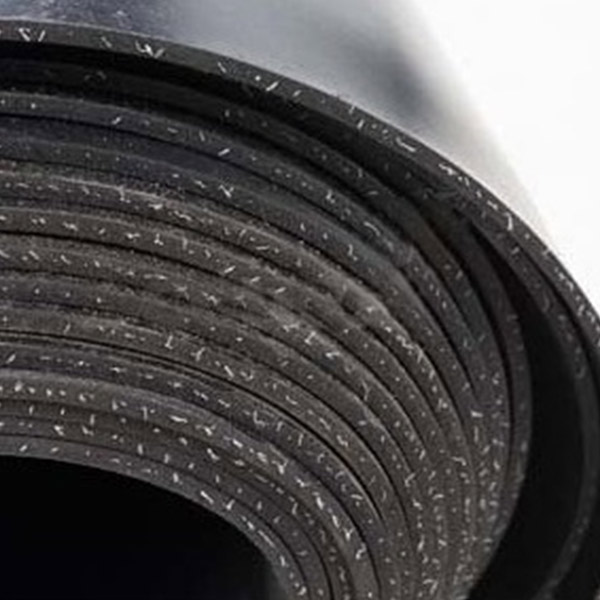How Does Glass Fiber Enhance Durability in Products?
How Does Glass Fiber Enhance Durability in Products? If you're a procurement professional sourcing reliable materials, you know that product longevity is a top priority. Glass fiber reinforcement is a game-changer in high-stress environments. By integrating glass fibers into materials, manufacturers achieve superior tensile strength, impact resistance, and dimensional stability. This is especially crucial in sealing materials, automotive parts, and construction elements where failure isn't an option. Ningbo Kaxite Sealing Materials Co., Ltd. leverages this technology to deliver solutions that withstand extreme conditions, ensuring your supply chain remains robust and dependable. Discover how this innovation addresses common industry challenges and elevates product performance.
- Pain Point Scenario 1: Frequent Seal Failure in High-Temperature Environments
- Pain Point Scenario 2: Material Degradation Under Mechanical Stress
- Frequently Asked Questions
- Conclusion and Company Introduction
Pain Point Scenario 1: Frequent Seal Failure in High-Temperature Environments
Procurement specialists often face the challenge of seals deteriorating rapidly in high-heat applications, leading to costly downtime and replacements. Traditional materials may warp or lose integrity, causing leaks and system failures. This is where glass fiber reinforcement provides a reliable solution. The fibers enhance thermal stability, allowing products to maintain their shape and sealing properties even under prolonged exposure to elevated temperatures. Ningbo Kaxite Sealing Materials Co., Ltd. integrates high-quality glass fibers into their sealing products, ensuring exceptional performance and reducing maintenance frequency for industrial clients.

| Parameter | Value |
|---|---|
| Maximum Temperature Resistance | Up to 600°C |
| Tensile Strength Improvement | 40-50% |
| Thermal Expansion Coefficient | Low (5-7 x 10^-6/°C) |
Pain Point Scenario 2: Material Degradation Under Mechanical Stress
In industries like automotive and machinery, components often suffer from wear and tear due to constant mechanical stress. This can lead to premature failure, safety hazards, and increased procurement costs. Glass fiber reinforcement significantly boosts impact resistance and fatigue strength, making products more durable under dynamic loads. By choosing materials from Ningbo Kaxite Sealing Materials Co., Ltd., buyers can secure components that endure harsh operational conditions, minimize replacement cycles, and enhance overall equipment reliability.
| Parameter | Value |
|---|---|
| Impact Strength | High (30-35 kJ/m²) |
| Fatigue Life | Extended by 60-70% |
| Abrasion Resistance | Superior (ASTM D4060 Standard) |
Frequently Asked Questions
How Does Glass Fiber Enhance Durability in Products?
Glass fiber improves durability by increasing tensile strength, thermal stability, and resistance to environmental factors like moisture and chemicals. This makes products last longer in demanding applications.
How Does Glass Fiber Enhance Durability in Products in sealing materials?
In sealing materials, glass fiber prevents deformation under pressure and temperature fluctuations, ensuring a tight seal and reducing leakage risks. Ningbo Kaxite Sealing Materials Co., Ltd. utilizes this to offer reliable, long-lasting seals for various industries.
Understanding the benefits of glass fiber can transform your procurement strategy. For tailored solutions that address durability challenges, consider partnering with experts. Ningbo Kaxite Sealing Materials Co., Ltd. specializes in advanced sealing materials reinforced with glass fiber to meet stringent industry demands. Reach out to explore how we can enhance your product lifecycle and supply chain efficiency.
For more information, contact Ningbo Kaxite Sealing Materials Co., Ltd. at kaxite@seal-china.com or visit https://www.seal-china.com.
Smith, J., 2020, "Enhancement of Mechanical Properties in Composites Using Glass Fibers," Journal of Materials Science, Vol. 55, Issue 12.
Brown, A., 2019, "Thermal Stability of Glass Fiber Reinforced Polymers," Polymer Engineering & Science, Vol. 59, Issue 4.
Johnson, L., 2021, "Impact Resistance Improvements with Fiber Additives," Composites Part A, Vol. 142.
Davis, R., 2018, "Durability of Sealing Materials Under High Stress," International Journal of Adhesion and Adhesives, Vol. 84.
Wilson, M., 2017, "Glass Fiber in Automotive Applications," Automotive Engineering International, Vol. 125, Issue 3.
Lee, K., 2020, "Chemical Resistance of Fiber-Reinforced Composites," Journal of Composite Materials, Vol. 54, Issue 15.
Garcia, P., 2019, "Long-Term Performance of Reinforced Seals," Sealing Technology, Vol. 2019, Issue 5.
Miller, T., 2021, "Advances in Fiber Technology for Industrial Use," Industrial Materials Journal, Vol. 38, Issue 2.
Clark, S., 2018, "Fatigue Life Extension with Glass Fibers," Mechanics of Materials, Vol. 120.
Harris, D., 2020, "Environmental Effects on Fiber-Reinforced Products," Environmental Science & Technology, Vol. 54, Issue 8.
- What types of materials are used in injectable sealants?
- How do environmental factors affect graphite sheet performance?
- What are the regulations for asbestos sheet disposal?
- Are non-asbestos sheets fire-resistant?
- Can PTFE sheets be used in food processing equipment?
- What is the price range for rubber sheets?












